
Distribution lines carry high-voltage electricity to end consumers, converting it into 220 volts along the way. Distribution lines are much thinner than transmission lines.
Tree limbs falling into overhead distribution lines can cause safety hazards and power outages. OPPD trims trees away from such lines to ensure public safety and reliable electric service.
Proper planting is the proactive way to keep the landscape in harmony with power lines. See the tree-planting tips below.
Tree-Trimming Methods
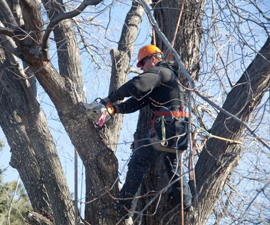 OPPD follows the American National Standards Institute (ANSI) A300 Standard Practices endorsed by the International Society of Arboriculture, the National Arbor Day Foundation and the National Arborist Association.
OPPD follows the American National Standards Institute (ANSI) A300 Standard Practices endorsed by the International Society of Arboriculture, the National Arbor Day Foundation and the National Arborist Association.
Those practices require tree-trimmers to cut branches back to the parent limb. This enables the pruning cuts to close more rapidly – reducing the chances of insect and disease damage – and promotes a healthier regrowth of branches that are directed away from the power lines.
Pruning considerations include the tree species, growth and regrowth rates, proximity to power lines, power line voltage, type of power line construction, length of pruning cycle, natural tree shape and branching pattern, general tree condition and appearance after pruning.
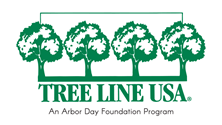 Since 2001, OPPD has earned the Tree Line USA designation from the National Arbor Day Foundation, in recognition of the utility's quality tree care programs and services.
Since 2001, OPPD has earned the Tree Line USA designation from the National Arbor Day Foundation, in recognition of the utility's quality tree care programs and services.
The photos, drawings and video below show the types of trimming used by OPPD. The trimming method depends on where the tree is located in relation to the power line, and the type of tree being trimmed.
Side Trim
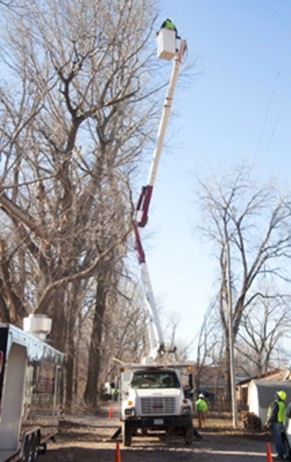
Prunes back branches on one side of tree.
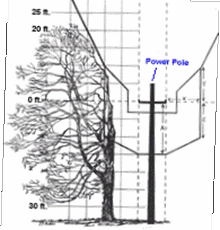
V-Trim (also called crown-reduction)
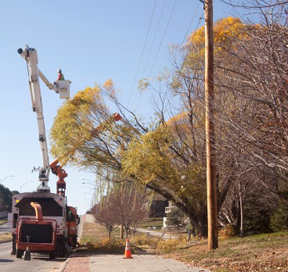
Prunes branches in center of tree crown.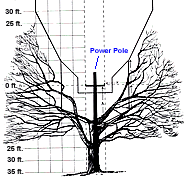
Tree and Shrub Planting Tips
Properly placed trees and shrubs can help reduce home heating and cooling costs. Careful positioning away from power lines also helps reduce power outages and the need for costly-tree trimming or removal as the tree matures.
For public safety and grid reliability, it's also important to landscape carefully around padmount transformers.
Call Before You Dig Before starting any project that requires you to dig into the ground, such as planting a tree or building a deck, call to have underground utility lines located and marked.

To cool in the summer, a deciduous tree (produces leaves in the spring) can provide maximum shade, help ease the load on your air conditioner and substantially reduce home-cooling costs. The list of popular shade trees includes maple, oak, hackberry and sycamore. These trees lose their leaves in the fall, allowing the sun to help warm your home during the winter months.

To keep cold air out in the winter, evergreen trees make ideal windbreaks. They can effectively protect your home from the most blustery winter wind, shield outside work areas, and help reduce heating costs. Windbreaks may be planted in a straight row or in a semi-circular pattern on the upwind side of the house, to block prevailing winds.
Guidelines for Planting Near Distribution Lines
- Small trees (10-20 feet tall) can be planted adjacent to lines
- Medium trees (25-40 feet tall) should be planted no closer than 30 feet horizontally to lines
- Large trees (50-80 feet tall) should be planted no closer than 50 feet horizontally to lines
- Shrubs and landscaping placed near padmount transformers (big green, metal boxes on ground) should allow adequate access to OPPD employees for maintenance and are planted at your own risk. It may be necessary to remove vegetation if it interferes with emergency or maintenance work.
Links to Help You Choose and Plant the Right Tree or Shrub
- Plant the Right Tree in the Right Place
- International Society of Arboriculture
- National Arbor Day Foundation
- Nebraska Arborists Association
- Nebraska Forest Service

